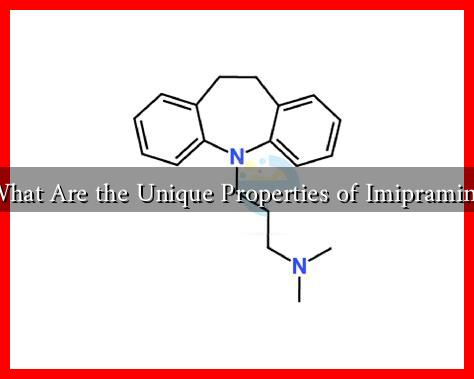-
Table of Contents
What Are the Unique Properties of Imipramine
Imipramine, a tricyclic antidepressant (TCA), has been a cornerstone in the treatment of depression and various anxiety disorders since its introduction in the 1950s. While newer antidepressants have emerged, imipramine remains relevant due to its unique properties and effectiveness. This article explores the distinctive characteristics of imipramine, its mechanisms of action, therapeutic uses, side effects, and its place in modern medicine.
Understanding Imipramine
Imipramine was initially developed as an antihistamine but was later found to have antidepressant properties. It is primarily used to treat major depressive disorder (MDD) and has also been effective in treating conditions such as:
- Obsessive-Compulsive Disorder (OCD)
- Panic Disorder
- Chronic Pain Syndromes
- Bedwetting in children (enuresis)
Its broad spectrum of action makes it a versatile option in psychiatric and pediatric medicine.
Mechanism of Action
Imipramine’s unique properties stem from its complex mechanism of action. It primarily works by inhibiting the reuptake of neurotransmitters, particularly:
- Serotonin
- Norepinephrine
This inhibition increases the availability of these neurotransmitters in the synaptic cleft, enhancing mood and emotional stability. Additionally, imipramine has a significant affinity for various receptors, including:
- Histamine H1 receptors
- Muscarinic acetylcholine receptors
- Alpha-1 adrenergic receptors
These interactions contribute to both its therapeutic effects and side effects, making it a multifaceted drug.
Therapeutic Uses and Efficacy
Imipramine has been extensively studied and is known for its efficacy in treating depression. A meta-analysis published in the Journal of Affective Disorders found that imipramine is effective in reducing depressive symptoms, with a response rate comparable to that of selective serotonin reuptake inhibitors (SSRIs).
Moreover, imipramine has shown promise in treating chronic pain conditions, such as fibromyalgia and neuropathic pain, due to its ability to modulate pain pathways. A study in the Pain Medicine Journal indicated that patients with chronic pain experienced significant relief when treated with imipramine.
Side Effects and Considerations
Despite its benefits, imipramine is associated with several side effects, which can limit its use in certain populations. Common side effects include:
- Dry mouth
- Constipation
- Weight gain
- Drowsiness
- Cardiovascular issues (e.g., arrhythmias)
Due to its anticholinergic properties, imipramine may not be suitable for elderly patients or those with pre-existing heart conditions. Regular monitoring and dosage adjustments are essential to minimize risks.
Imipramine in Modern Medicine
While newer antidepressants have gained popularity, imipramine’s unique properties ensure its continued relevance. It is often considered when patients do not respond to SSRIs or when they present with specific conditions like chronic pain or OCD. Furthermore, its long history of use provides a wealth of clinical data that can guide treatment decisions.
Healthcare providers may also consider imipramine for off-label uses, such as treating insomnia or anxiety disorders, due to its sedative effects.
Conclusion
Imipramine remains a significant player in the field of psychiatry and pain management. Its unique properties, including its multifaceted mechanism of action and broad therapeutic applications, make it a valuable option for many patients. While it is essential to be aware of its side effects and contraindications, imipramine’s efficacy in treating depression and other disorders cannot be overlooked. As research continues to evolve, imipramine may find new applications, solidifying its place in modern medicine.


